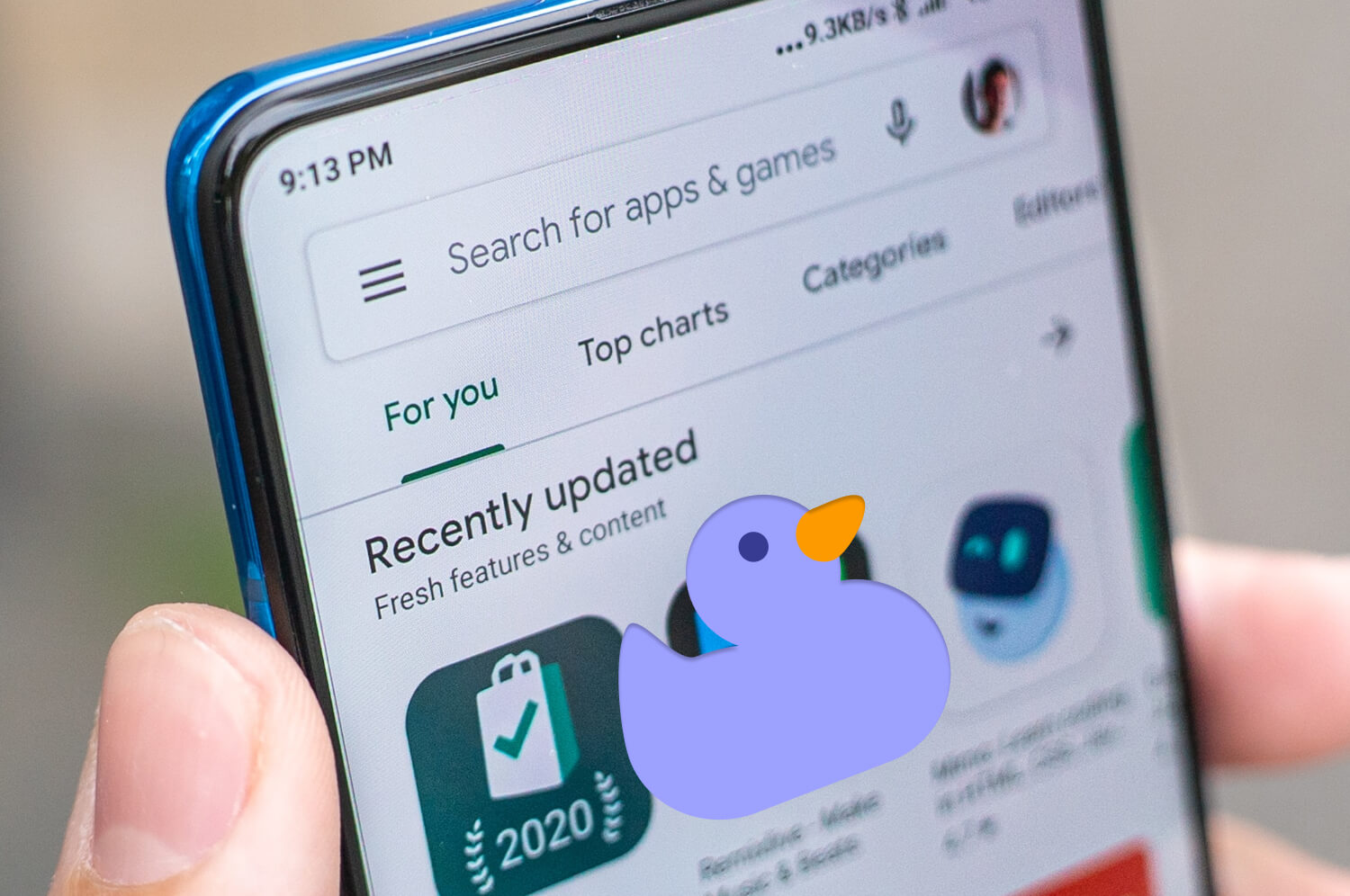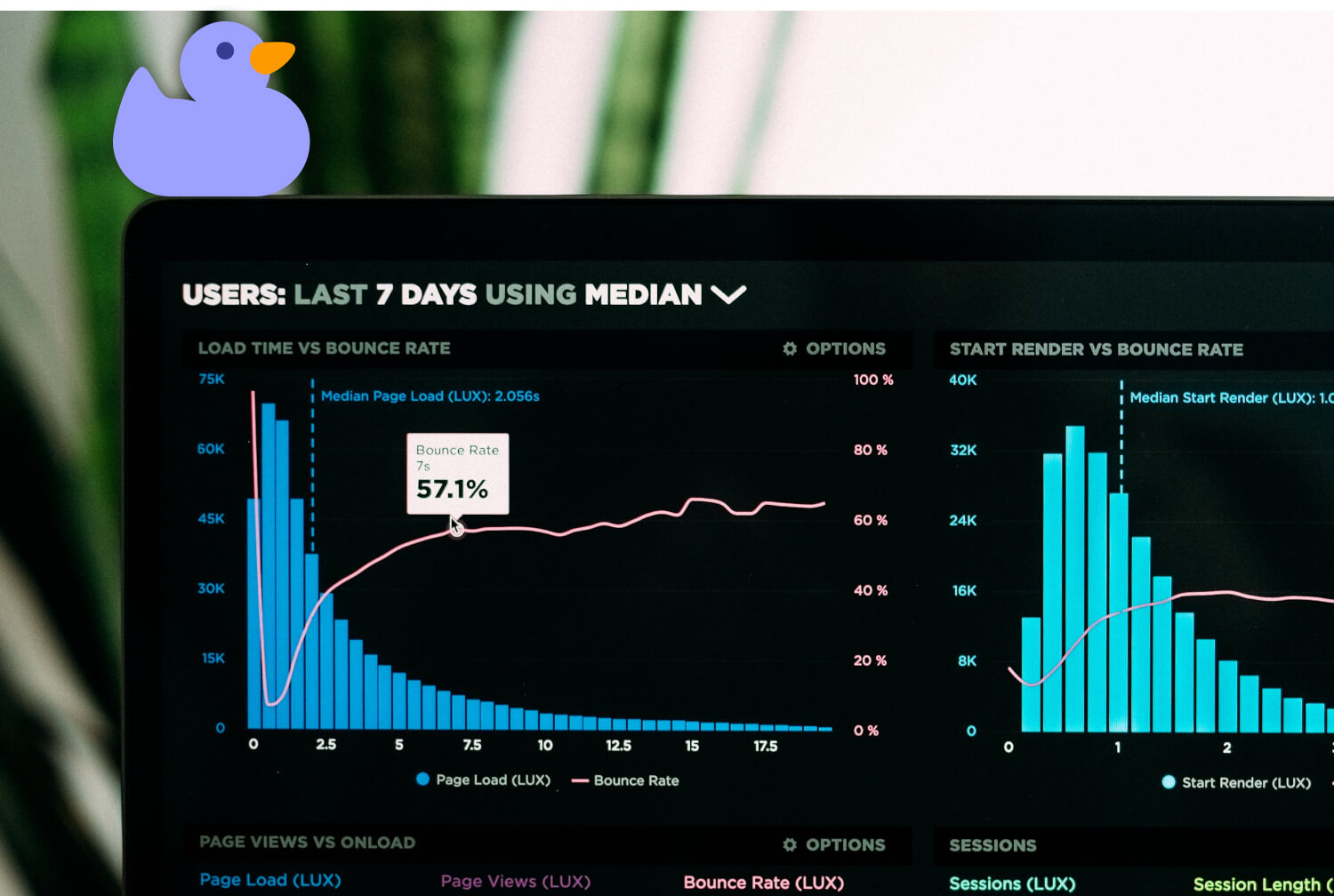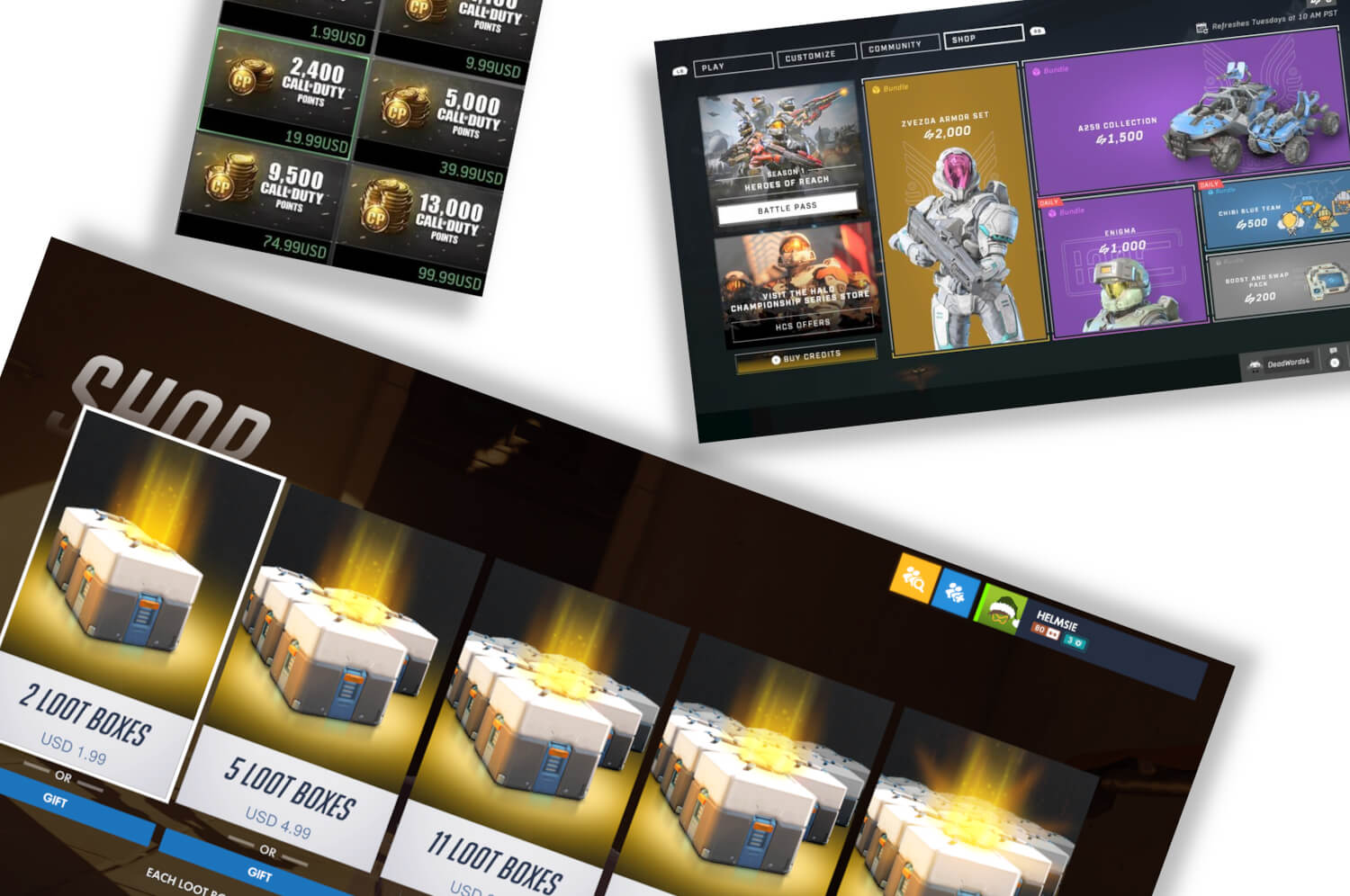Almost all software providers use the Software-as-a-Service model. In this article we explore why that is, and answer the question: what’s the starter pack for building a profitable SaaS business?
The first major, popular, commercial software product using (and actively promoting) the SaaS model was Salesforce. It came out back in 1999. Over 20 years later, the SaaS model is everywhere.
We rely on SaaS apps for work, entertainment, pleasure, intimacy, and personal growth. Spotify, Google Cloud, YouTube, Netflix, Tinder, Adobe Cloud, Coursera, Trello, Jira—they all use the SaaS model.
SaaS is no longer the secret sauce of the IT industry. SaaS is the bread & butter. It’s the standard. Everything is being sold as-a-service:
- infrastructure (IaaS),
- platforms (PaaS),
- databases (DBaaS),
- games (GaaS),
- or just everything-in-one (XaaS, meaning all as-a-Service things you need in one package).
The barriers of entry are low. You can build a Minimum Viable Product and start selling it as-a-Service within a few weeks if you’re a skilled programmer, or an entrepreneur with a No-Code application builder (which, of course, you’ll have to subscribe to because it’s also a SaaS).
If you're an ambitious entrepreneur, this article will show you new ways to approach your budding SaaS business, and ideas for maximising profitability from the start.
Table of contents:
- SaaS 101 - What is a SaaS?
- Two Basic Requirements of SaaS Products
- SaaS Vs… Are There Any Alternatives Left?
- Building Saas from a Business Perspective
- Building SaaS from a Software Development Perspective
- Tech Fundamentals of SaaS Products
- The Dark Side and Challenges of SaaS
SaaS 101 - What Is SaaS?
There are several basic steps to building a business using the SaaS model. If you’re planning to build and sell a SaaS product, you’re going to have to:
- Find a problem,
- Find an audience / target group of people that have the same problem,
- Define a product feature set that solves that problem,
- Build the product,
- Set, test, and iterate pricing,
- Market and sell like hell!
In order to be a true SaaS, your product has to be sold and used over the internet. For most products, this means that your software is accessed through the web browser.
If you needed a program before SaaS came along, you had to get a CD with it, or a pendrive, or download an .exe (.app/.dmg for Mac) file.

You had to install the program on your own machine. Often there would be issues with installing the program and getting it to work in the way you needed. There would be viruses and keyloggers in the executable files.
Software distribution was messy, and SaaS cleaned it all up. The fact that you can use all popular applications through a web browser nowadays? It’s all thanks to the SaaS model!
Compared to old models of software delivery, SaaS created multiple awesome advantages:
- Lower costs for everyone included,
- Greater simplicity in software development and long-term maintenance,
- Ability to design and implement creative business models and pricing,
- Endless customization options for most demanding customers,
- Interconnectivity and modularity in software development and delivery,
- Incomparable agility in business strategy and product development.
Two Basic Requirements of SaaS Products
Thanks to improvements in hardware and networks, and propelled by the increasing power of internet protocols, SaaS became the standard model of distribution for software.
Hold on a second. What exactly does it take for a product to be a SaaS?
The two basic SaaS requirements are:
- A SaaS product is cloud-based, centrally hosted on your infrastructure (either your own physical servers, or servers that you rent as-a-service).
- You don’t sell the software, you sell access to it, usually as a monthly subscription.
And that’s it. Apart from the two requirements above, it’s really up to you how you design everything else about your SaaS product.
SaaS vs… Are There Any Alternatives Left?
It used to be SaaS vs on-premise software, but it’s getting more and more difficult to compare these two categories.
Software that’s purely on-premise (with no SaaS characteristics) exists in:
- niche markets,
- places where it would be too expensive to migrate from legacy infrastructure into cloud-based solutions,
- tools for developers.
Other than that, it’s pretty much all SaaS, only the hosting varies. From a user perspective, there are two main options:
- For greatest ease of use and zero maintenance, you can opt for a pure SaaS that’s centrally hosted by the vendor.
- For customization or security purposes, you can host parts of the product (data / application / UI / all of it) on your own infrastructure.
The as-a-service, cloud-based model paired with subscription payments is just too darn good.
It’s so good, in fact, that all tech providers are restructuring their business using the as-a-service model. Even your iPhone might soon be a subscription service. Many home security systems, like Ring, have been using the as-a-service model for years now.
Note: you might be confused, because many SaaS products are available as downloadable apps. Downloadable SaaS apps aren't the same as on-premise software. On-premise means that your data doesn't leave your own machines. With a downloadable SaaS app, everything still happens online, the only thing that changes is the graphical interface. Instead of a web interface, you use a desktop/mobile app, but your data still has to move back-and-forth between your machine and an external server.

Build a New SaaS Product: Step-by-step Framework
There are two sides of building a SaaS product:
- The business,
- The technology that enables it.
We’ll get to the technology in a minute. Let’s start with the business.
Building SaaS from a Business Perspective
Step 1 - Solve One Problem
Before you plan or do anything, remember these 3 crucial words:
Keep It Simple!
It’s really simple when you think about it. It’s not easy to do by all means, but it’s simple to understand.
It starts with one unsolved problem.
No need to save the world, you just need to solve one problem.
What’s a Good Problem to Solve?
Probably the most popular approach is to start with a problem that you experience and try to solve it.
But, that’s a very broad statement, so let’s try to narrow it down.
One great piece of advice, from an episode of the “My First Million” podcast, is:
- Whenever there’s messaging / texting / emailing / excel sheets / any data moving around that is critical for the business, that’s a SaaS opportunity.
Clearly, it doesn’t need to be a complicated problem.
For example, the creators of Notion noticed that information often gets lost in project management. People use too many tools, information isn’t synchronised, and knowledge is lost.
So, Notion built an all-in-one product that solves this problem, and simplifies project management and knowledge exchange within a company.
YouTuber TK Kader offers another interesting perspective:
- Hack a category, don’t try to create a new one.
You don’t need to create a ground-breaking, market-disrupting product. You can join a popular category and build a new alternative.
For example, Slack wasn’t the first chat by far, there were plenty of alternatives. Discord is another app that does pretty much the same, and yet they’re still able to make the big bucks simply by targeting a different customer segment.

Salesforce wasn’t the first CRM, there were many alternatives. But they had the secret SaaS sauce and the vision and strategy required to become a market-leading company.
Notion wasn’t the first wiki/project management product, you could use Google’s free tools to achieve similar outcomes.
You don’t need to be the first to do something. You can do the same thing as others, just in a different way.
Another tip from TK Kader is:
- Products don’t matter, markets do!
If you can’t visualise your product, perhaps you should start by thinking about the people that would become your customers.
Define a detailed customer persona first, and it will be easier to visualise and architect a product.
- Maybe you should build a micro-SaaS?
YouTuber Eric tells us about the many different platforms where you can build a micro-SaaS.
Micro-SaaS opportunities exist on every platform that has add-ons or extensions. Google Chrome extensions, Trello add-ons, Jira apps, and so on.
Dark Reader is a great example. All it does is turn websites dark so that your eyes don’t get tired from the endless glare of black text on white backgrounds. It’s been around since 2014, and boasts over 5,000,000 users.
You probably don’t want to rely on a micro-SaaS for your whole income. It’s risky. If the platform changes rules or shuts down, your business might dissolve. Plus, platform commissions can eat away your profits.
Nonetheless, if you do it properly, a micro-SaaS can be a profitable, stable side-business.
Okay, let’s move on from the idea stage of building your SaaS. Let’s say that you have an idea, and you already built the first version of your product (we’ll discuss product development in detail in a moment).
What’s next?
Step 2 - Get One Paying User
Your main priority in the beginning of your SaaS company should be to get one user to subscribe and pay for your product.
Until that happens, you can’t say for sure that you have something worth selling.
Once you get the first paying user, then your goal becomes to get another 10 paying users. Then 100, and so on, so forth.
All of the other things—how you manage the company, growth, marketing, tech stack—you will learn all of it as you move forward.
Make no mistake, there will be a whole lot of things to learn if you wish to succeed. But, there’s no need to stress about them too much if you haven’t even reached initial market traction yet.
Your first paying user is the first, crucial step to market traction.
Step 3 - Enable Growth
This is where the fun begins. Once you have a market-validated product with active, paying users, it’s time to see how big it can get.
There are endless apps that do anything and everything you can imagine. Breaking through the noise with your brand is very difficult to do.
Some might think that once they have paying users, everything else will sort itself out.
The reality is different. Once your user base starts growing, that’s when the real challenge begins.
Suddenly, you need to start juggling several tasks at once:
- Maintain, and preferably increase monthly sales numbers.
- Satisfy existing customers and keep solving their problems in a timely manner.
- Constantly improve your marketing strategies to keep reaching new prospects.
- Keep your software operational, secure, fast, and scalable.
- Build out new features.
- Iterate pricing and business model until optimal.
While doing all of that, you need to always keep in mind things like:
- CAC (Customer Acquisition Cost),
- LTV (Life Time Value of a customer),
- User on-boarding processes,
- User churn rates,
- Key growth metrics (which depend on your business model).
At this point you should have enough money in the bank to hire consultants to help you with these issues, or build out your in-house team.

This wraps up the basics of SaaS business management. But, you need to do all of this while also taking care of the software and hardware that powers your product.
So, let’s see what’s the best way to build and maintain a modern SaaS product purely from a software development perspective.
Building SaaS from a Software Development Perspective
SaaS founders can easily get tripped up by the complexity of building a good software product.
This happens both to founders with a business background, as well as (or even more so) to founders with a software development background.
Non-technical founders can get overwhelmed with the technological possibilities, and end up spending more than they need (or not enough) to build a good product.
Technical founders can also get lost in the mire of technological possibilities, and get stuck in development hell. They might end up endlessly changing their codebase or technology stack, and adding new features that are completely irrelevant to target users.
This is where agility comes in to save the day. Many consultants will try to tell you what "agile" is, and sell you methodologies and courses for agile software development.
The truth is, there is no secret to being agile. It’s just a basic approach to problem solving that is beneficial in most areas of work and life, not just software development.
As one of the original creators of the Agile Manifesto said in a conference talk, the recipe for agility is:
- Find out where you are,
- Take a small step towards your goal,
- Adjust your understanding based on what you learned,
- Repeat.
- Whenever you have a choice to make, choose the option that will make future changes easier.
This is extremely important, so remember this forever!
Now that you know the true recipe for agility, you’re ready to start working on your software. There are three main roads to choose:
1. Learn to code while building your product
There are endless opportunities to learn programming relatively quickly, if you have the patience and mindset for it. Starting with FreeCodeCamp, a 100% free interactive programming course with multiple curriculums, all the way to premium services like Codecademy.
As many techies will tell you, building a real product is the best way to learn programming. If you have the time and energy for it, choosing this route might give an awesome boost to your career.
It will be hard, and you’ll probably fail the first time, but you’ll learn so much along the way that you’ll become invaluable.
2. Use a No-Code tool
With tools like Bubble or Zapier, you can build a sellable prototype of your product using ready-made blocks and simple drag-and-drop editors. Building the first version of your app is no longer a big hurdle, you can build it as easily as setting up a website on Squarespace.
3. Hire a developer or outsource development
This is the standard way for entrepreneurs that have cash on hand. You get a technical co-founder, hire a senior developer, or outsource the development of your software to a software development agency like us.
If you go for this option, it would still help you to understand the technology side of your business. You could save a lot of money this way.
Even things that seem simple, like hosting your product on Amazon Web Services, can quickly get out of hand. Racking up tens of thousands of dollars in unnecessary AWS bills is very easy if you don’t know what you’re doing.
Ignore technology at your own peril, because ignorance can be very costly.
Tech Fundamentals of SaaS Products
If you're not a software developer, you might think that a SaaS product is simple to build and doesn't have many moving parts. Not quite!
Every SaaS product has a technology stack, which consists of multiple elements that need to work well together. Your tech stack can be a scalable engine for growth, or the ball and chain that holds your business back.
What are the different parts of a SaaS tech stack?
1. OS and programming language(s)
Will your app be built and used on Windows, MacOS, Linux or all systems through the web browser?
Will the core of your codebase be written in JavaScript, Python, C# or Ruby?
These decisions have many implications. The most important one is the ability to hire developers.
From a technological perspective, you might be tempted to use niche technologies. From a business perspective, this can make it extremely hard to hire skilled developers to work on your product.
2. Servers and server tools
What you see when you use an app is a graphical interface. What you don’t see at all is basically an orchestra of robots that work 24/7/365 to keep your software operational.
There are many types of servers, and many types of associated tools that enable the endless calculations and operations required by modern software.
3. Data management
Here, databases and data management tools store, receive and send data between the back end and the front end.
4. Back end
The back end of your software is the glue that connects the server, data, and front end. This is where you implement functionalities that take user requests and data, and return the outputs that the user desires.
5. Front end
This is what the user sees, clicks on, and interacts with.
6. APIs
An API (Application Programming Interface) is how systems communicate with each other. You extend APIs from your application, and you use APIs to connect with third-party systems that are necessary for your system to work.
7. Monitoring tools
It’s good to know when your software is buggy. Monitoring is the key element of your tech stack that helps you optimise performance and fix bugs quickly.
And that's it, the 7 main parts of a technology stack. There are more layers to add, but they’re business-oriented, like Business Intelligence tools or analytics suites that track users and provide the data you need to make informed decisions.
The Dark Side and Challenges of SaaS
Even if it might be untrue, let’s consider for a moment that SaaS isn’t the best possible software distribution model.
In a world filled with software services, perhaps you can gain an advantage by simply offering a non-service, traditional, proprietary software product? You know, one that you just download, install, and use however you like?

SaaS isn’t all fun, games, and easy money. There’s a dark side to SaaS, and we need to talk about it.
First, the most critical issue:
Data Privacy Issues in SaaS Software
Did you ever consider that, when using most SaaS products, you're actually sending your data to a third-party server to do something that you could’ve done easily on your own machine, using free software?
As a SaaS user, you don’t always know where your data is going. From this point of view, using the free GIMP graphics editor would be a better option than Adobe Photoshop. Or the Notepad on your computer instead of Google Docs.
The point is, we do have viable alternatives, but we've all chosen to relegate all our data to third-party servers that can do god-knows-what with it. Not sure if this is a risky situation? Maybe this will convince you:
The European Union is currently forcing better privacy practices on Big Tech with the Digital Services Act. Because of it, Facebook had to research how to enforce better data management standards on their platform.
You know what they found? That in the current state of the platform, it’s basically impossible to say what happens with the data Facebook collects about you. To say that it’s worrying would be to say nothing at all.
Facebook is an extreme case. It’s the biggest social media site in the world, and not your regular, mid-market SaaS product. But, if data privacy practices are so terrible at Facebook, how can you be sure that any of your SaaS providers aren’t abusing your data?
It's such a big problem that even HBO’s John Oliver did a segment about how software companies abuse people’s data.
The segment touches on the issue of data brokerages. These companies are in the business of acquiring data about us (from social media and digital products), and then reselling that data to anybody who wants it.
Basically, if you’re an avid user of digital products, your data is being sold all the time to anyone who has the cash to buy it. If you ever got an ad that weirdly knew too much about you, you can thank data brokerages for that.
What does all of this mean for you?
As an entrepreneur and/or developer, you can’t afford to be ignorant about data privacy. You simply need to be an expert in this area because users are tired of malicious practices, and lawmakers are tightening laws to prevent data privacy abuse across the board.
Additionally, being an advocate for data privacy and running your SaaS business in an ethical way can be a huge marketing advantage for you.
Dark Patterns in SaaS Products
Dark Patterns are another issue that the European Union is trying to alleviate with the aforementioned Digital Services Act.
Have you ever noticed that it’s much harder to delete an account and unsubscribe from a SaaS product than it is to subscribe and provide your credit card data in the first place?
At its' core, it's a sad practice, but still popular because it’s good for the bottom line and shareholder profits.
Dark Patterns are about making it hard for users to do things you don’t want them to do.
Making it hard to delete an account. Making it hard to stop automatic re-subscription and payment after a billing period ends. Making it hard to delete personal data.
What does this mean for ambitious SaaS founders? Well, avoiding dark patterns can be a good way to differentiate yourself from the crowd.
If you become an advocate against dark patterns, and don’t use them in your product, you're instantly more trustworthy than all of your competitors who use dark patterns.
Remember, trust is built over a long time, but it’s lost in a day. When you make it hard for users to do anything in your product in the name of your own profit, you instantly lose your users’ trust.
People Are Getting Tired of Live Services
This trend is most visible in the gaming industry. Games-as-a-Service are currently the most popular business model in gaming.
They operate just like SaaS products. They’re usually freemium, which means free-to-play but with a large amount of premium add-ons, visual skins and power-ups, all which you can buy with microtransactions.
It’s an extremely profitable model. EA Games, one of the biggest game publishers in the world, has projected that 70% of their 2021 revenue came from live services.
Clearly, this trend is here to stay, but a lot of gamers are (and have been for some time now) getting tired of microtransactions and the live service model.
It brings to question the whole point of making games.
Should they be all about money, and squeezing every penny possible from the credit cards of parents who want to be good to their kids? Or should they be a more artistic medium that provides rich experiences without relying on predatory business models?

The answer, as always, is somewhere in the middle. If you provide a great gaming experience, and don’t abuse the as-a-service model with endless microtransactions, then you’re good.
Same goes for non-gaming SaaS products. If you provide a valuable solution, and don’t use predatory business practices to reach ever bigger revenues, then you’re good.
People aren’t dumb. They always notice when a company cares more about profits than the good of their customers.
When profits become more important than being good to your users, make no mistake—even your best customers will eventually turn their backs on you.
Saas is the Standard
The SaaS model works great, and it’s the standard delivery model for software solutions. Chances are that if you’re planning to build a product, releasing it as a SaaS will be the best way to organise your business.
Building profitable SaaS companies is an iterative process that includes a lot of learning as well as guesswork, bold decision-making, testing, hard work and dedication.
Luckily, it keeps getting easier (and cheaper) to build and sell SaaS products. You have open-source tools, premium SaaS products for entrepreneurs, along with a huge environment with mentors and fellow start-uppers that can teach you and help you.
Good luck!
Editorial note: This article was originally posted on 2021-05-27, and updated 2022-04-29 with a complete rewrite of the original version.
Read more:
➤ Tech Stories You Probably Missed - Q1 2022
➤ Cybersecurity - Your New Priority. Basic Guide to Cybersecurity in Online Business
➤ Should You Move Your Business To The Cloud?










 Angry Nerds (Poland)
Angry Nerds (Poland) Angry Nerds (USA)
Angry Nerds (USA) Angry Nerds (Canada)
Angry Nerds (Canada)



